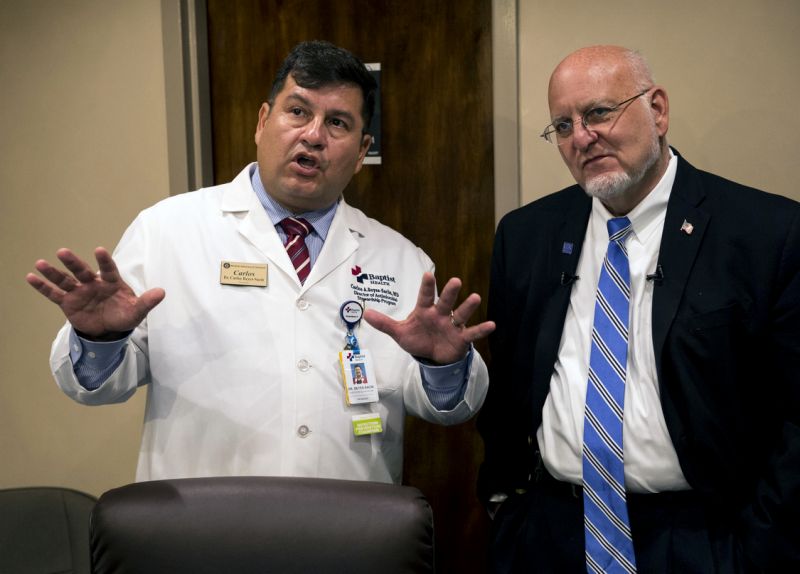Source: news.yahoo.com
MONTGOMERY, Ala. (AP) — As the federal government prepares to launch an ambitious initiative to end the HIV epidemic, the director of the Centers for Disease Control on Friday applauded an Alabama HIV clinic’s commitment to providing health services to rural communities.
Director Robert Redfield met with state public health officials and toured the Medical Advocacy & Outreach clinic in Montgomery to begin laying the groundwork for the decade-long federal campaign. HIV is the virus that causes AIDS.
Alabama is one of seven states the federal government is planning to target with additional expertise, resources and technology for its relatively high rate of new HIV infections among residents in rural areas.
The initiative — first announced by President Trump in his State of the Union address in February — aims to reduce new HIV infections by 75% in five years and at least 90% in 10 years.
The South accounted for more than half of the nearly 40,000 new HIV diagnoses in 2017, with 23% of new diagnoses occurring in suburban and rural areas, a disproportionately high distribution compared to the rest of the U.S., according to data from the CDC.
Redfield said targeting the epidemic in rural areas is particularly difficult because of both the limited access to health services and the increased stigma associated with homosexuality and HIV/AIDS as an illness.
“The true enemy of public health is stigma,” Redfield said after a meeting with state lawmakers, public health officials and physicians. “In rural America, stigma is an even greater issue.”
Redfield said the federal initiative, which has yet to be allocated funding, will focus on improving diagnoses, getting people into treatment, implementing prevention strategies, working with health departments on identifying hot spots and helping local communities develop a workforce to engage individuals living with HIV.
Scott Harris, Alabama’s state health officer, said the initiative will rely on conversations with local health-care providers to help design the kind of unique programs that will be most effective there.
“We have an opportunity to use people at the local level to help us understand exactly what’s going on in these particular communities,” Harris said.
Redfield, who began researching the virus more than 30 years ago, got a first-hand look at how Medical Advocacy & Outreach targets rural communities during a walk-through of the facility that included a brief presentation on the clinic’s telemedicine program, a video chat setup between a doctor and a patient described by some staff as the “crown jewel” of the clinic.
On a flat-screen TV situated at the front of a small room in the Montgomery clinic, Redfield greeted a nurse located in one of the organization’s ten satellite clinics. He then put on a pair of Bluetooth headphones which allows physicians to remotely hear the hearts, lungs or bowels of a patient via a digital stethoscope dozens of miles away.
Thomas Stephens, a spokesman for the clinic, said he hoped the visit gave Redfield a “personal,” ”human” perspective on the kind of on-the-ground programs aimed at stemming HIV/AIDS in rural Alabama.
“We want to suppress viral loads. We don’t want to suppress self-esteem,” said Jamil Dawson, MAO’s director of support services, to Redfield during his tour.
“I think I’m going to steal that,” Redfield said.
